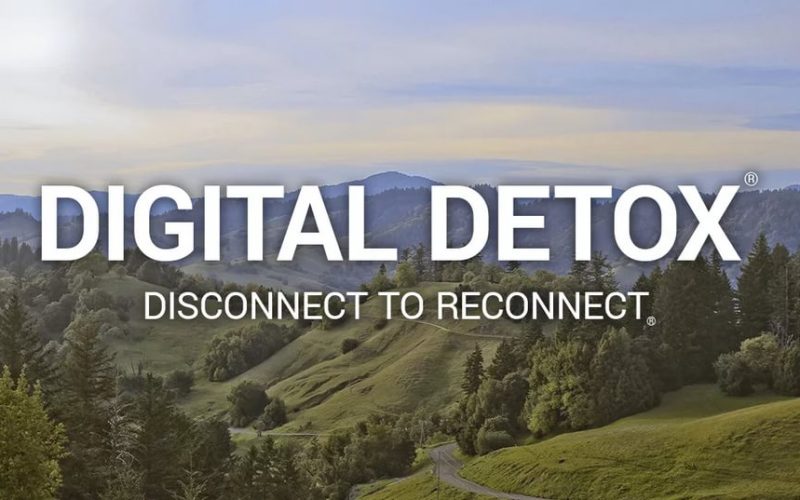Introduction
In 2025, technology is more integrated into our lives than ever before. Smartphones, computers, and social media platforms constantly demand our attention, making it difficult to disconnect and unwind. This constant digital connection can lead to stress, anxiety, and burnout, impacting both mental and physical health. If you’re feeling overwhelmed by the constant buzz of notifications and screen time, it might be time to consider a digital detox.
A digital detox involves taking a break from digital devices to reduce stress, improve well-being, and reconnect with the world around you. In this article, we’ll explore why a digital detox is important in 2025, the benefits it offers, and practical strategies for unplugging and finding balance in your digital and offline lives.
What is a Digital Detox?
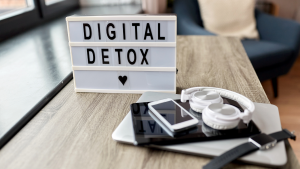
A digital detox refers to intentionally disconnecting from digital devices like smartphones, tablets, computers, and social media for a specific period of time. It’s a conscious decision to step away from the online world to reduce stress, regain focus, and foster real-life connections.
In 2025, a digital detox is more necessary than ever due to the increasing reliance on technology for work, social interactions, and entertainment. While technology can bring convenience and productivity, it can also lead to overstimulation, lack of sleep, and a feeling of being constantly “on.”
Taking time away from screens allows us to refresh and focus on the present moment. Whether it’s a weekend getaway, a few hours of screen-free time, or a full week off, a digital detox helps reset your mind and body, promoting mental clarity and relaxation.
The Importance of a Digital Detox in 2025
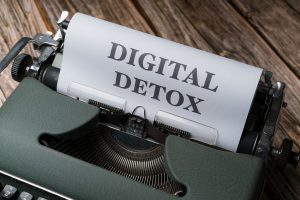
As our reliance on technology increases, so does the need to take a break. Here are some reasons why a digital detox is vital in 2025:
1. Mental Health Benefits
Constant screen time can contribute to feelings of stress, anxiety, and even depression. Social media, in particular, can lead to comparisons, fear of missing out (FOMO), and negative self-image. Taking a break from digital devices can help reduce these feelings and give you a chance to reconnect with yourself.
Research shows that unplugging can help lower cortisol (the stress hormone) and improve emotional regulation, helping you feel more centered and calm.
2. Improved Sleep
Overuse of digital devices, especially before bedtime, can disrupt sleep patterns. The blue light emitted by screens interferes with melatonin production, the hormone responsible for regulating sleep. As a result, many people struggle with falling asleep or experiencing restful sleep.
By taking a digital detox, especially in the evening, you can improve your sleep quality, allowing your body to recharge and prepare for the day ahead.
3. Enhanced Focus and Productivity
Spending hours on digital devices can lead to multitasking, which often reduces productivity. Constant notifications and distractions can make it difficult to focus on important tasks. A digital detox allows you to regain focus and increase productivity, whether you’re working, studying, or engaging in creative activities.
By reducing digital distractions, you give yourself the mental space to prioritize your tasks and think clearly.
4. Reconnecting with the Present Moment
A major benefit of a digital detox is the opportunity to reconnect with the present moment. Constantly scrolling through social media or checking emails can take you away from what’s happening around you. By unplugging, you allow yourself to be more present in real life, whether you’re spending time with loved ones or enjoying nature.
Tips for a Successful Digital Detox in 2025
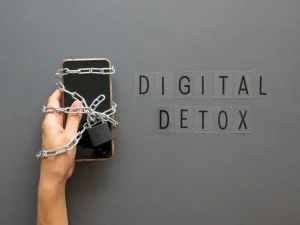
Incorporating a digital detox into your life doesn’t have to be difficult. Here are some practical tips for taking a break from digital devices and improving your well-being:
1. Set Boundaries for Screen Time
The first step in any digital detox is setting clear boundaries for your screen time. This could mean limiting social media usage, setting screen-free hours, or designating specific times during the day to check emails and messages.
Start by tracking your screen time with built-in phone features or apps that monitor device usage. This will give you an idea of where you can cut back and create healthier habits.
Tip: Aim for at least an hour of screen-free time in the morning and evening to start your day and unwind without distractions.
2. Create a Screen-Free Zone
Designate areas of your home or workspace as screen-free zones. This could include the dining room, bedroom, or living room. Having these designated areas helps you build boundaries and encourages you to focus on other activities, like spending time with family or engaging in a hobby.
Tip: Leave your phone in another room during meals or before bed to fully disconnect and enjoy these moments without interruption.
3. Try a Digital Detox Retreat
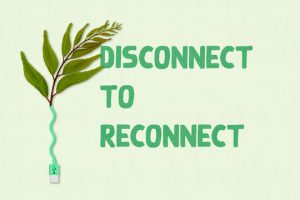
If you’re looking to take a more extended break from technology, consider going on a digital detox retreat. These retreats are designed to help you unplug from digital devices while focusing on mindfulness, relaxation, and self-care. Many retreats offer activities like yoga, meditation, hiking, and journaling to help you reconnect with nature and yourself.
Tip: Look for retreats in serene, nature-filled locations where you can fully immerse yourself in a digital detox experience.
4. Practice Mindful Tech Usage
Rather than completely eliminating technology from your life, practice mindful tech usage. This means being intentional with your screen time, using technology for specific purposes, and avoiding mindless scrolling.
Set intentions before using digital devices and be mindful of your energy and how you feel after engaging with screens. If you notice that certain activities, like scrolling through social media, leave you feeling drained, take a break or limit your usage.
Tip: Use apps that help you stay mindful of your screen time, like setting timers for social media or scheduling breaks throughout the day.
5. Engage in Offline Activities
During your digital detox, make time for offline activities that promote relaxation and connection. This could include reading a book, journaling, going for a walk, or engaging in creative hobbies like painting or knitting. These activities help you relax and re-establish a deeper connection with yourself and the world around you.
Tip: Keep a list of offline activities that you enjoy and refer to them when you feel the urge to pick up your phone.
Table: Benefits of Digital Detox and Tips for Unplugging
| Benefit | How It Helps | Tips for Unplugging |
|---|---|---|
| Reduced Stress and Anxiety | Helps lower cortisol levels, reduces mental strain | Set screen-free times each day, especially before bed |
| Better Sleep Quality | Reduces blue light exposure, promotes better sleep patterns | Avoid screens 1-2 hours before bedtime |
| Improved Focus and Productivity | Limits distractions, enhances concentration and efficiency | Create tech-free zones in your home, set boundaries for usage |
| Enhanced Presence and Connection | Allows you to reconnect with the moment and others | Spend more time with loved ones without digital distractions |
Conclusion
In conclusion, a digital detox in 2025 is more than just a trend—it’s a powerful tool for improving your overall well-being. By reducing screen time, setting boundaries, and engaging in offline activities, you can reclaim your time, reduce stress, and boost productivity. In today’s fast-paced digital world, taking the time to unplug and reconnect with yourself and others is essential for maintaining mental health and finding balance.
Taking a digital detox may feel challenging at first, but with small steps and intentional changes, you’ll experience the positive impact it can have on your life.






